Eubiotic is a Greek word coming from “eu” and “bios”, meaning “healthy” and “life”. Feed additives that help to improve biosecurity in the gastrointestinal tract (GI tract) by lowering pathogenic bacteria, inflammation and enhancing the microbial population balance and immunity could be classified as eubiotics.
To date, phytogenics, probiotics, prebiotics, enzymes and organic acids have been classified as eubiotics. Since mycotoxins can suppress animal health, the above list of eubiotics would not be complete without a toxin inactivation strategy.
Mycotoxins are different in origin, structure and biological properties. They play a key role in disrupting the microbial balance, enhancing inflammation and increasing dysbiosis, resulting in lower biosecurity of the GI tract.
The GI tract microbiome is very important for animal health, as it can protect animals from pathogens and has an important enhancing role in the host’s immune system.
In addition, the connection between the GI tract microbiome, the brain and lungs highlights the importance of keeping this organ (GI tract) safe and healthy.

Therefore, the negative effect of mycotoxins on the GI tract and the interaction with the GI tract microbiome play an important role in animal health. Regardless of the type of interaction between mycotoxins and the GI tract microbiome (below paragraphs), the outcome could lead to dysbiosis in the GI tract, causing chronic diseases.
Thus, it is recommended to use well-studied, research-based and registered microorganisms as toxin inactivators for specific mycotoxins (DON and fumonisin (FUM)) to biotransform them.
Taking into account that the adsorption mechanisms for these types of mycotoxins will never be as efficient as their biotransformation.. The MiaBond 360 biotransformation mechanism consists of registered ingredients which will biotransform FUM and DON into non-toxic versions.
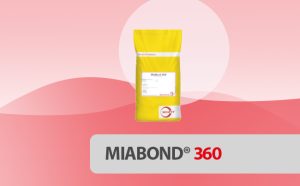
BIOTRANSFORMATION
The GI tract microbiome (mainly in ruminants) can modify the toxicity of some mycotoxins (deoxynivalenol (DON)). This is due to the chemical transformation of mycotoxins by enzymes that are present in microbial cells.
At a first glance,the biotransformation of some mycotoxins by microbiota sounds rather convenient but this mostly ignores the main challenge; this biotransformation could lead to toxic components (specifically the activation of “masked mycotoxins” by hydrolases before their absorption).
The components that are produced through this process may also be unstable. For example, the transformation of DON to DOM-1 (non-toxic) has been observed in pigs but its degradation was poor and not stable. A similar scenario was shown with ochratoxin (OTA).

The biotransformation of OTA was less effective in some ruminant species in comparison to others.
In monogastrics, potential microbial degradation occurs in the large intestine, which implies that the mycotoxin has already been absorbed higher up in the GIT. Meaning mycotoxin deactivation is ineffective.
This ineffective biotransformation of mycotoxins can then cause environmental changes in the GI tract.
BIOLOGICAL DETOXIFICATION
Mycotoxins also have the ability to bind to the cell walls of the microbe. This may lead to a reduction of mycotoxins “absorption”. In addition to binding capacity they could biodegrade mycotoxins as well.
Nevertheless, it is worth noting that biodegradation is highly time dependent and it would not be 100% effective.
GI TRACT ENVIRONMENT
The intestine is a very important organ which contains several barriers: physical, chemical, immunological and microbial. A review study showed that normal intestinal homeostasis vs abnormal intestinal homeostasis was affected by mycotoxins (Figures 1 and 2).
Figure 1. Normal intestinal homeostasis and barriers
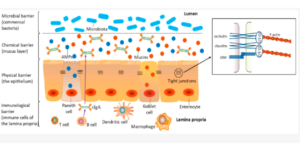
Figure 2. Intestinal barriers compromised by mycotoxins
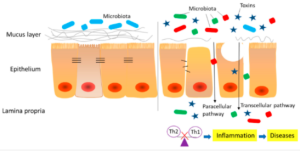
Reference: https://doi.org/10.3390/toxins12100619
As shown, mycotoxin contamination can lead to severe environmental changes that cause inflammation. The intestinal mucus layer is an important barrier and without its proper functioning, changes in the intestinal environment would lead to poor animal health.
Different mycotoxins have different negative effects on the intestinal mucosa and epithelium.
For example, DON disrupts goblet cells, which play a pivotal role in producing mucin, a primary constituent of the protective mucus layer. DON can also cause intestinal lesions which reduce overall animal performance. Additionally, ZEN can reduce the survival rate of the epithelium and OTA can also cause intestinal lesions.
Some mycotoxins, such as DON, negatively impact nutrient absorption. These can open tight junctions and increase intestinal barrier permeability. Causing plasma amino acid leakage and increased C. perifingens proliferation, resulting in necrotic enteritis. The negative effects of DON on intestinal barrier permeability are illustrated in Figure 3.
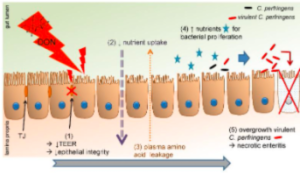
Figure 3. DON and environmental changes
Reference: https://doi.org/10.1371/journal.pone.0108775
Hence, the adverse interaction of various contaminating mycotoxins or the presence of any of them in high concentrations can hinder defense mechanisms and diminish animal performance. This occurs because multiple barriers are negatively impacted.
GI TRACT IMMUNE CELLS, INFLAMMATION AND MYCOTOXINS
The intestine of every animal species plays an important role in supporting immune regulatory mechanisms found in the intestine (Figure 1). Normally, mycotoxins are immune suppressors and they can interact with the immune system of the intestine. Mycotoxins can cause inflammation and increase the inflammatory response (Figure 2).
Furthermore, mycotoxins can increase the susceptibility to viral diseases by weakening the animal’s immune system. When these factors are combined with the impact of mycotoxins on epithelial cells and mucus (as mentioned earlier), it leads to a detrimental synergistic effect on animal health and performance.
CONCLUSIONS
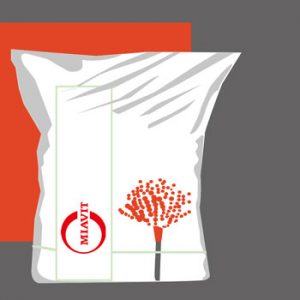 In summary, recognizing the threat of elevated mycotoxin contamination in agricultural products, exacerbated by the effects of global warming, underscores the crucial need for heightened surveillance and effective mycotoxin management.
In summary, recognizing the threat of elevated mycotoxin contamination in agricultural products, exacerbated by the effects of global warming, underscores the crucial need for heightened surveillance and effective mycotoxin management.
The MIAVIT all-round protection product (MiaBond 360) supports the livestock industry with three modes of actions; adsorption, biotransformation and advanced cell protection. 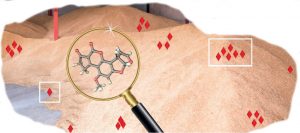
Given that mycotoxins have the potential to hinder animal health and performance, recognizing effective mycotoxin inactivation solutions like MiaBond 360 as eubiotics can serve as a means to increase awareness across the global livestock industry and emphasize the critical nature of mycotoxin inactivation strategies. Without these strategies, animal health and performance would remain compromised.

For more information, please contact [email protected]
Figures References:
Gao, Yanan, Lu Meng, Huimin Liu, Jiaqi Wang, and Nan Zheng. 2020. “The Compromised Intestinal Barrier Induced by Mycotoxins” Toxins 12, no. 10: 619. https://doi.org/10.3390/toxins12100619
Antonissen G, Van Immerseel F, Pasmans F, Ducatelle R, Haesebrouck F, et al., 2014., The Mycotoxin Deoxynivalenol Predisposes for the Development of Clostridium perfringens-Induced Necrotic Enteritis in Broiler Chickens. PLOS ONE 9(9): e108775. https://doi.org/10.1371/journal.pone.0108775